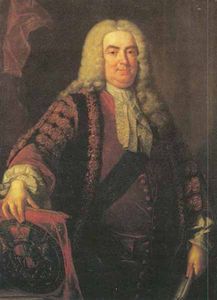PPATH - Prime Path

The ministers of the cabinet were quite upset by the
message from the Chief of Security stating that they
would all have to change the four-digit room numbers
on their offices.
— It is a matter of security to change such things
every now and then, to keep the enemy in the dark.
— But look, I have chosen my number 1033 for good
reasons. I am the Prime minister, you know!
— I know, so therefore your new number 8179 is also
a prime. You will just have to paste four new
digits over the four old ones on your office door.
— No, it's not that simple. Suppose that I change the
first digit to an 8, then the number will read 8033
which is not a prime!
— I see, being the prime minister you cannot stand
having a non-prime number on your door even for a
few seconds.
— Correct! So I must invent a scheme for going from
1033 to 8179 by a path of prime numbers where
only one digit is changed from one prime to the
next prime.
Now, the minister of finance, who had been eavesdropping,
intervened.
— No unnecessary expenditure, please! I happen to
know that the price of a digit is one pound.
— Hmm, in that case I need a computer program to
minimize the cost. You don't know some very cheap
software gurus, do you?
— In fact, I do. You see, there is this programming
contest going on...
Help the prime minister to find the cheapest prime path between any two given four-digit primes! The first digit must be nonzero, of course. Here is a solution in the case above.
1033
1733
3733
3739
3779
8779
8179
The cost of this solution is 6 pounds. Note that the digit 1
which got pasted over in step 2 can not be reused in the last step
– a new 1 must be purchased.
Input
One line with a positive number: the number of test cases (at most 100). Then for each test case, one line with two numbers separated by a blank. Both numbers are four-digit primes (without leading zeros).
Output
One line for each case, either with a number stating the minimal cost or containing the word Impossible.
Example
Input: 3 1033 8179 1373 8017 1033 1033 Output: 6 7 0
hide comments
|
|
manohar_4139:
2016-06-07 16:59:01
AC in one go..) nice problem |
|
|
ajay_5097:
2016-05-26 16:11:07
My first on BFS !! Nice one :) Last edit: 2016-05-26 16:11:36 |
|
|
hulk_baba:
2016-05-25 00:00:02
It's not necessary that the transitioning prime number lies between the 2 numbers, it may be greater. so be careful while bfs; |
|
|
vijay kumar paliwal:
2016-05-23 13:32:11
M Lovin' It! |
|
|
Sơn Tùng M-TP:
2016-05-15 22:28:59
Easy problem! :) BFS |
|
|
rraj001:
2016-05-15 12:21:45
nice problem,AC in one go!!!
|
|
|
dwij28:
2016-04-11 08:26:36
Bfs and Sieve of Eratosthenes.. :) Time limit and test cases are very lenient so it passes even if algorithm for checking single digit difference takes 0(n^2), where n is the no. of 4 digit primes.. |
|
|
karthik1997:
2016-03-23 14:33:41
Simple Sieve and a BFS . Ac in one go . Learnt the importance of implementation rather than the algo :P |
|
|
hardik agrawal:
2016-02-27 13:36:20
nice problem :D
|
|
|
dhumketu:
2016-01-27 15:51:46
Literally Nothing is IMPOSSIBLE!! :D Didn't even consider a possibility of impossible. |
| Added by: | overwise |
| Date: | 2007-10-02 |
| Time limit: | 2s |
| Source limit: | 50000B |
| Memory limit: | 1536MB |
| Cluster: | Cube (Intel G860) |
| Languages: | All except: ERL JS-RHINO NODEJS PERL6 VB.NET |
| Resource: | ACM ICPC NWERC 2006 |

 RSS
RSS